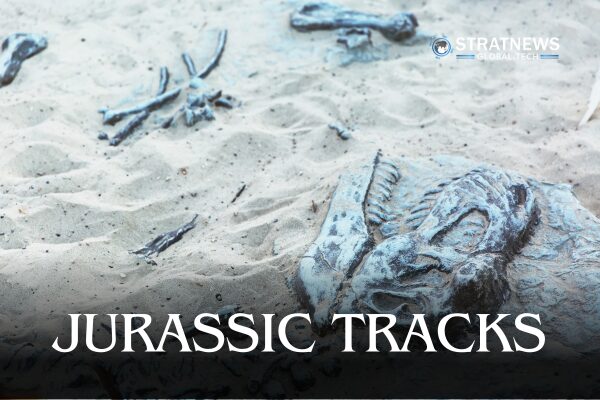Prehistoric Tracks Found Along Scotland’s Historic Isle of Skye Coastline
The Isle of Skye in Scotland is famous for a dramatic moment in history. In 1746, Charles Edward Stuart – known as Bonnie Prince Charlie – landed on its rocky shores. Disguised as a maid, he arrived by boat while fleeing the English after his defeat at the Battle of Culloden. The site is now known as Prince Charles Point However, this location holds more than just historical importance. Researchers have discovered 131 fossilised dinosaur footprints dating back 167 million years. These prints, left during the Jurassic Period, reveal the presence of both meat-eating and plant-eating dinosaurs. They walked across what was once a subtropical freshwater lagoon.
A Rare Glimpse Into Ancient Dinosaur Life
The discovery is significant because it comes from a period with limited fossil records. These tracks offer a rare look at everyday life among dinosaurs. Scientists compare the scene to modern animals gathering at watering holes in Africa.
“It’s a peaceful moment captured in stone,” said Tone Blakesley, a University of Edinburgh graduate student and lead author of the study published in PLOS One. “It shows dinosaurs, especially the plant-eaters, moving without immediate threat from predators.”
The tracks provide more than size or species information. They give insight into dinosaur behaviour and how they interacted with their surroundings – something bones alone cannot offer.
Footprint Clues Reveal Ancient Ecosystem
Although the exact species remain uncertain, researchers can estimate likely candidates. The meat-eaters belonged to the theropod group, specifically a family known as megalosaurs. One example could be Megalosaurus, a 6-metre-long predator with sharp teeth. It walked on two legs and was one of the first dinosaurs ever named.
The plant-eaters were sauropods – large, long-necked dinosaurs with four thick legs. A possible candidate is Cetiosaurus, which reached 16 metres in length and fed on vegetation.
Theropod footprints were around 45 cm long, showing three toes and sharp claws. Sauropod prints were wider and about 50 cm long, sometimes showing four short, triangular toes.
In total, about 24 individual dinosaurs left prints at the site. Drones helped researchers map and create digital models of the area, revealing more about the environment in which these dinosaurs lived.
Surrounding the lagoon were forests filled with conifers, ginkgoes and tree ferns. Other dinosaurs like stegosaurs and ornithopods left tracks in drier areas nearby. The ecosystem also supported crocodiles, salamanders, turtles, small mammals and flying reptiles known as pterosaurs.
“This discovery gives us a direct look at dinosaur behaviour,” said Steve Brusatte, University of Edinburgh palaeontologist and senior author of the study.
When History and Prehistory Collide
Brusatte pointed out the striking overlap between Scotland’s prehistoric and historical past. Bonnie Prince Charlie may have unknowingly walked over these ancient footprints during his escape to France.
“When the prince was running for his life, he was literally running on the footsteps of Jurassic dinosaurs,” Brusatte noted.
with inputs from Reuters



